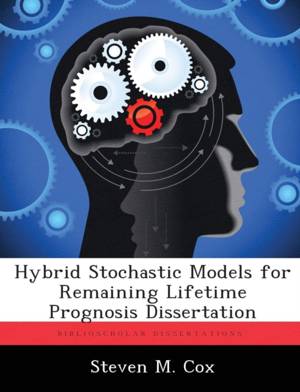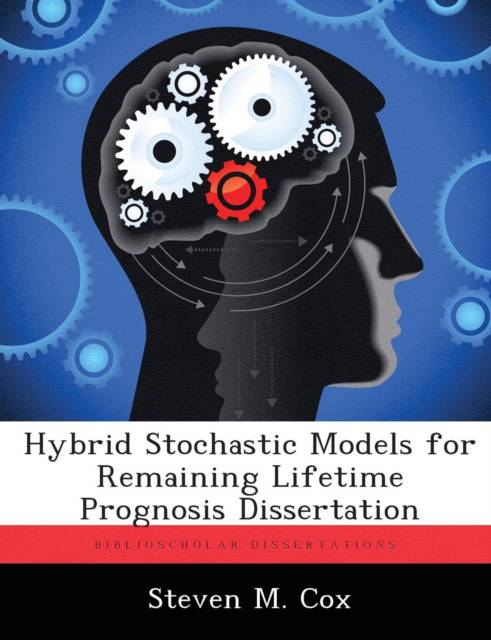
- Afhalen na 1 uur in een winkel met voorraad
- Gratis thuislevering in België vanaf € 30
- Ruim aanbod met 7 miljoen producten
- Afhalen na 1 uur in een winkel met voorraad
- Gratis thuislevering in België vanaf € 30
- Ruim aanbod met 7 miljoen producten
Zoeken
Hybrid Stochastic Models for Remaining Lifetime Prognosis Dissertation
Steven M Cox
Paperback | Engels
€ 54,45
+ 108 punten
Omschrijving
This dissertation is concerned with the development of implementable analytical models for the estimation of the remaining lifetime probability distribution of a component subject to a randomly evolving environment. The models incorporate estimated parameters via environmental or degradation measures obtained from component sensors. We consider three distinct stochastic process models for the random environment: a temporally nonhomogeneous Markov environment, a temporally homogeneous Markov environment, and a temporally homogeneous semi-Markov environment. The hybrid approach unites real environment state or degradation measures with analytical, stochastic failure models to numerically compute the distributions and their moments. Additionally, it is shown that the lifetime distributions resulting from the homogeneous Markov environment and a special case of the nonhomogeneous Markov environment are distributions of the matrix-exponential type. Because the lifetime distribution in the semi-Markov case is computationally intensive, we instead utilize phase-type (PH) approximations that transform the semi-Markov environment to a time-homogeneous Markov environment. The numerical experiments indicate that the analytical techniques developed in this research hold great promise for remaining lifetime prognosis in a variety of contexts.
Specificaties
Betrokkenen
- Auteur(s):
- Uitgeverij:
Inhoud
- Aantal bladzijden:
- 182
- Taal:
- Engels
Eigenschappen
- Productcode (EAN):
- 9781288313686
- Verschijningsdatum:
- 19/11/2012
- Uitvoering:
- Paperback
- Formaat:
- Trade paperback (VS)
- Afmetingen:
- 189 mm x 246 mm
- Gewicht:
- 335 g

Alleen bij Standaard Boekhandel
+ 108 punten op je klantenkaart van Standaard Boekhandel
Beoordelingen
We publiceren alleen reviews die voldoen aan de voorwaarden voor reviews. Bekijk onze voorwaarden voor reviews.











